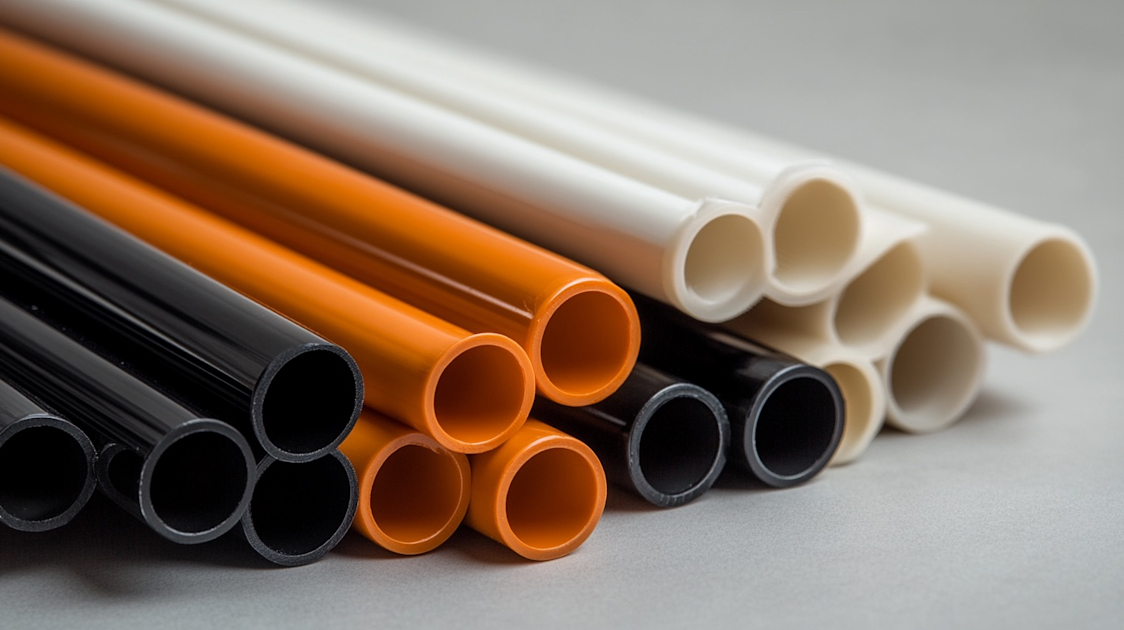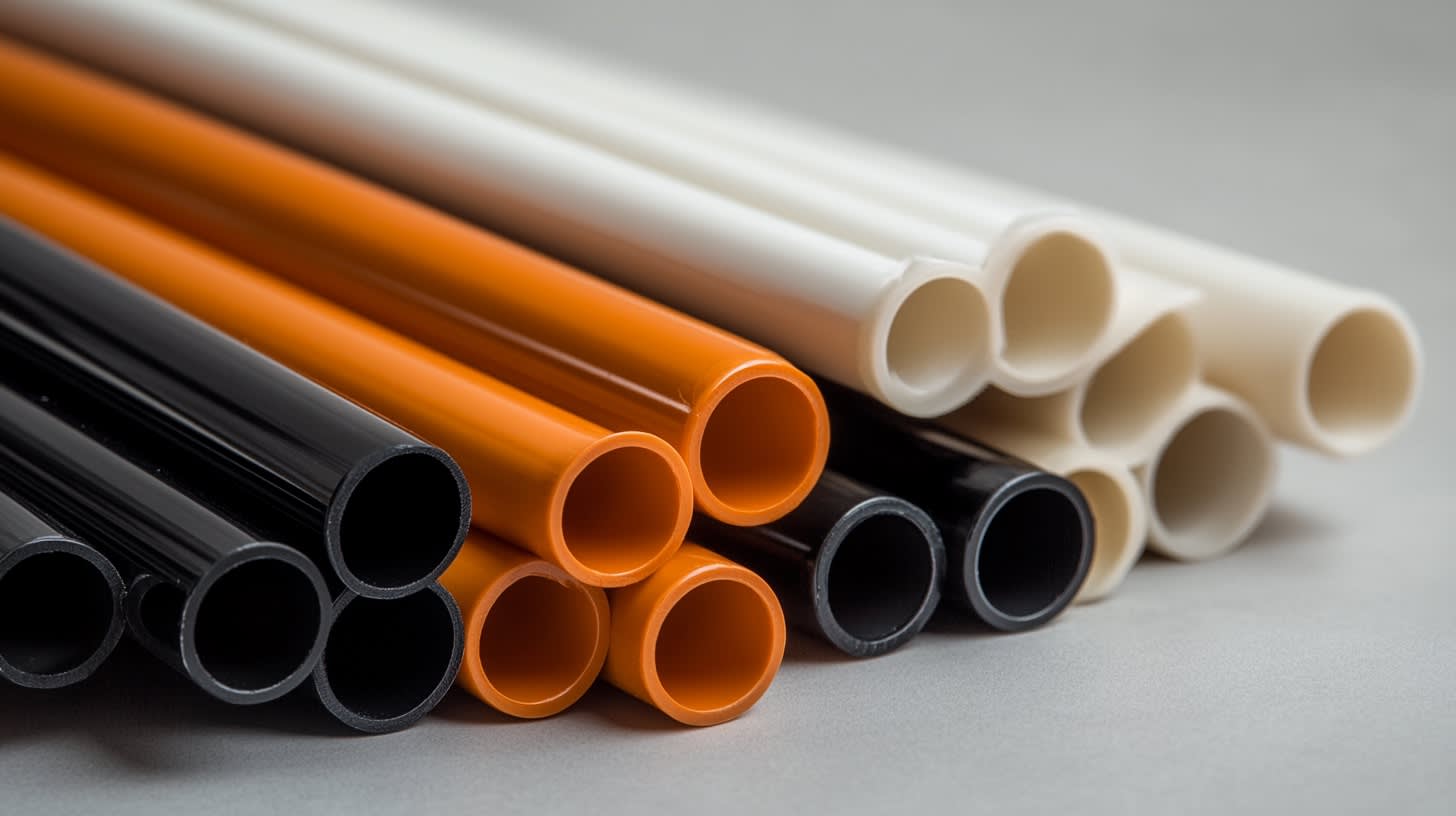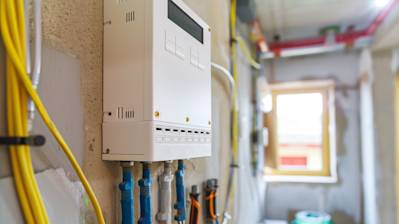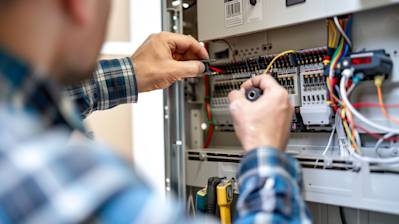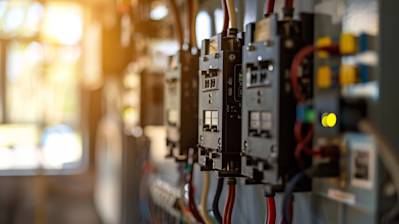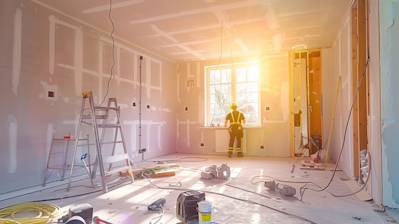Introduction to PVC Conduit
When you walk around the city, you may have noticed tubes running along the exterior walls of buildings, in basements or underground. This tubing, referred to as conduit, often goes overlooked in our day-to-day life, yet it's an essential aspect of modern construction. It serves as a protective driveway for electrical wiring, offering insulation and fire safety. While conduits can be crafted from many materials like metal, the focus for today would be on PVC (polyvinic chloride) conduit. PVC conduit is the go-to choice for many contractors due to its numerous benefits.
What Exactly Is PVC Conduit?
PVC conduit is a type of tubing used to encase and protect electrical wiring in infrastructure. It's composed of a thermoplastic polymer, PVC, which is known for its durability, affordability, and versatility. The use of this material in conduit systems makes them an excellent choice for a vast number of applications.
The Different Types of PVC Conduit
There are several types of PVC conduit, which are designed to suit various applications:
Rigid PVC Conduit: This type of conduit is often used for exposed work, such as along the side of a building or within a basement. It's highly durable and resistant to impact.
Flexible PVC Conduit: As the name implies, this conduit is flexible, allowing for easy installation around corners and obstacles.
PVC Conduit for Underground Use: This type is designed to be buried underground and can handle the heavy pressure of soil and foot traffic.
Understanding the Benefits of PVC Conduit
When compared to their metal counterparts, PVC conduits are preferred due to a variety of reasons. Here are some factors contributing to their popularity:
Durability: PVC conduits are highly resistant to wear and tear, resulting in an extended lifespan.
Corrosion Resistance: They stand strong against corrosion from water and other elements.
Insulation: PVC offers excellent insulation, reducing the risk of electrical shock.
Flexibility: They are easier to bend and cut, which promotes efficient installation and adaptation to various structures.
Affordability: PVC conduits are more cost-effective compared to metal conduits.
How to Install PVC Conduit
The installation of PVC conduit might seem daunting at first glance but, with careful planning and execution, it can be relatively straightforward. Here is a simple step-by-step guide:
Plan Your Route: Use a sketch of the area to plan the most effective course for your conduit, making note of any obstacles.
Measure and Cut: Measure the length of conduit you need and use a hacksaw or PVC cutter to cut your conduit to size. Remember to leave room for fittings and to ensure a straight cut.
Attach your Fittings: Apply PVC cement to the ends of your conduit and within your fittings. Assemble as needed, attaching to your structure as you go.
Run your Wiring: Once your conduit and fittings are secure, you can feed your wires through.
Note: Always adhere to local building codes and safety regulations when installing PVC conduit.
Proper Maintenance for PVC Conduit
Although PVC conduit is known for its robustness and longevity, it still requires minimal maintenance to keep it at optimal performance. This can include:
- Regular visual inspection for signs of damage.
- Replacement of any cracked or broken segments promptly.
- Ensuring seals at junction points remain watertight.
- Refraining from overloading conduits with excess wires.
Frequently Asked Questions about Pvc Conduit
Is PVC conduit suitable for outdoor wiring?
Due to its sturdy properties, PVC conduit is a good fit for outdoor electrical installations. Its resistance to moisture and inclement weather conditions makes it durable, ensuring the longevity of your wiring. However, it's always recommended to consult with a professional electrician to determine the best conduit for your specific needs.
How does PVC conduit react to extreme temperatures?
Contrary to popular belief, PVC conduit can survive in extreme temperatures. It can resist heat up to 60 degrees Celsius, and cold down to -15 degrees Celsius. However, at high temperatures, the conduit might soften slightly but will return back to its original form when the temperature drops. It is important, though, to install it correctly, taking into account expansion and contraction due to temperature changes.
Does PVC conduit come in different sizes?
Yes, PVC conduit is available in a range of sizes. The size you need will depend upon the type and volume of wiring you need to pass through the conduit. You need to consider both the interior diameter and the wall thickness. Standard sizes range from 1/2 inch to 4 inches in diameter.
Can PVC conduit be painted?
PVC conduit can indeed be painted. Before painting, make sure the surface is clean and dry. You may want to use a plastic primer or an adhesion promoter to ensure that the paint sticks effectively to the conduits' surface.
How to cut PVC conduit?
You can cut PVC conduit with simple hand tools such as a hacksaw or a PVC cutter. Always remember to measure and mark the exact points on the pipe where you wish to cut.
Pros of PVC Conduit
Durable
PVC conduit is hailed for its high durability. It's designed to last for a significant length of time even in harsh weather and environmental conditions. PVC is impervious to rust and corrosion that are common with metal conduits. Even when exposed to the elements, PVC conduit will not disintegrate, crumble, or break easily. This strength ensures an enduring functionality and a longer life-span for your conduit.
Cost-Effective
When compared to other types of conduit material such as steel or copper, PVC is substantially cheaper. This cost-effectiveness makes it a go-to choice for many budget-conscious installers and contractors. Its cost advantages extend to maintenance as well, given that PVC conduits require less care and don't need any rust or corrosion treatments making them financially beneficial in the longer run.
Easy to Install
PVC conduits are very lightweight, which makes them easy to transport, handle, and install. They can easily be cut using a handsaw and are easy to glue or join together using PVC cement. Their relative malleability allows for tailor-made customization and bending to fit desired positions and angles.
Unaffected by Electromagnetic Interference
PVC is a non-conductive material, hence electromagnetic fields or magnetism do not interact with PVC conduit. This is a significant advantage in many electrical installations as it means there is less chance of induced voltage or current affecting sensitive circuits or causing interference.
Cons of PVC Conduit
Limited Heat Resistance
While PVC conduits are durable and resistant to many conditions, they fare poorly with high temperatures. They are not suitable for applications with high heat, as they can become soft and lose shape. Long-term exposure could even cause them to catch fire. For areas or applications with extreme heat, metal conduits are a safer choice.
Less Strength than Metal
Despite being resistant to rust and corrosion, PVC conduits do not match the strength of metal ones. This could be problematic in areas where the conduit might sustain physical impact. Even though PVC conduit won't rust, it can still crack or break if hit with strong force, whereas a metal conduit is less likely to be compromised in such circumstances.
Environmental Concerns
While easily manufacturable and cost-effective, PVC poses significant environmental concerns. If not disposed of properly, PVC conduit could release harmful chemicals into the environment. It's not biodegradable and its production involves substances like chlorine which are bad for the environment. Hence, while it might be easier on the pocket, it poses significant potential harm to the planet.
Not Suitable for Exposed Installations
While PVC conduit is easy to install indoors and underground, it's not always suitable for exposed installations. The material may become brittle and crack readily when exposed to sunlight. UV radiation from sunlight deteriorates PVC over time, so additional measures might be required to protect it from the sun if it's used outdoors.
Summary
So, that's the lowdown on the versatile material known as PVC conduit. Its range of benefits mean it's a go-to whenever we need to protect our cables and wires. Plus, the fact that it's lightweight, easy to install, and pretty cost-effective is a win-win in any book.
The beauty of PVC conduit extends to its resistance against heat, chemicals, and corrosion too. When it comes to essential features in material used around the house or construction sites, these come in super handy. It's clear then why PVC conduit sits high on the popularity list when looking for durable solutions in electrical installations.
Just when you thought you have heard it all, PVC conduit packs in one more punch - its flexibility. It allows the use in different settings, from complex wiring systems to a simple backyard DIY project. This, combined with all the other awesome things we've learnt about PVC conduit, certainly makes it a star performer, wouldn't you agree?
About Sagan Electric
Sagan Electric is an established electrical contractor based in beautiful Sacramento, CA. We have built our excellent reputation over the years with unmatched dedication to customer service, workmanship, and safety. Our highly experienced and certified electricians are known not just for their expertise, but also for their friendly and professional demeanor. Whether you need residential, commercial, or industrial electrical work, our team at Sagan Electric handles every project with transparency and respect. We believe every customer deserves reliable services, from quick repairs and upgrades to complex installations. Have a look around our website and get a taste of what we do and what we can offer to you!
Tags: plastic conduit, electrical tubing, conduit fittings,

